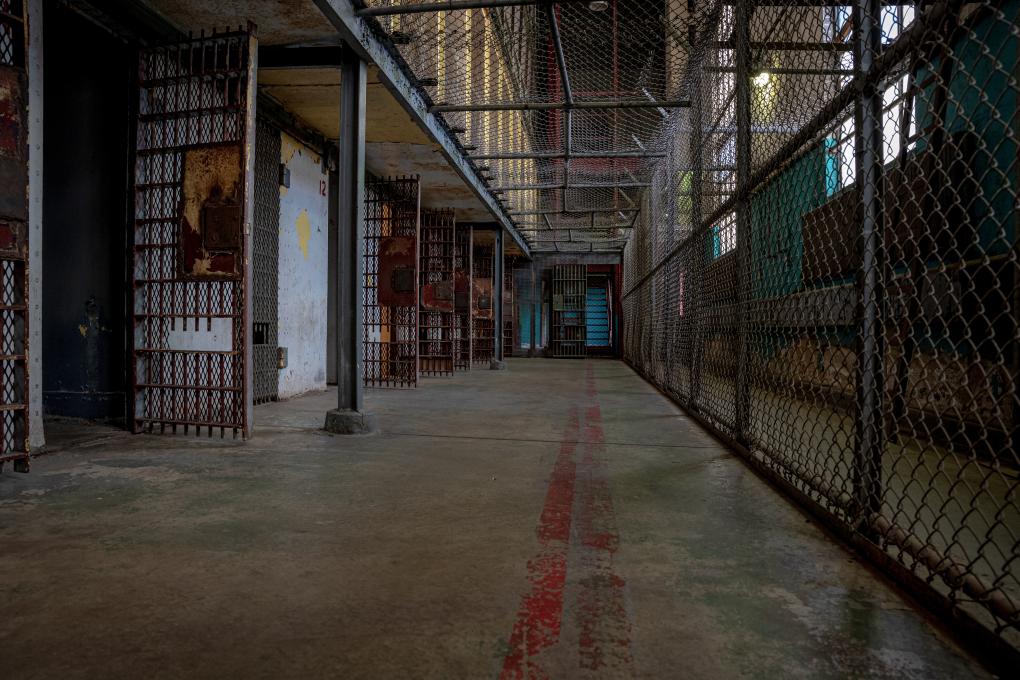Unsolved Columbus: The strange case of the killer who escaped a local prison, then vanished

It was March 1972. Lester Eubanks sat on the side of his bed, balancing a canvas on his lap and adjusted it slightly to capture a thin shaft of light from the closest window. Dipping his brush in oil paints, the self-taught artist applied finishing touches to one of his favorite works yet – a portrait collage of Angela Davis, the California civil rights activist charged in connection with a mass shooting outside the Marin County courtroom. (Davis would be found not guilty just two months later.)
Because of his self-taught skills, Eubanks became well-known in his new home – on Death Row of the Ohio State Penitentiaryin downtown Columbus. The 28-year-old Mansfield native had been behind bars for six years, ever since being convicted of brutally attacking and murdering a 14-year-old girl in his hometown.
To fight boredom, and to take his mind off the nearby electric chair, Eubanks had returned to a hobby he first adopted as a child. And five other condemned men, inspired by Eubanks, took up painting, as well. It was clear these other convicts admired Eubanks’ ability to make a canvas come alive – even in the demanding conditions of a prison cell barely big enough to turn around in.
BROUGHT TO YOU BY
Occasionally, a good-natured guard would allow the men out of their cells, two or three at a time, so they could discuss their brush techniques. During these short gatherings, two or three were often seen crowding the bars of Eubanks’ cell, where the “Master” would offer tips and short lessons.
In fact, all six inmates got so good that the prison warden began allowing for an occasional Death Row art contest. While they all demonstrated distinctive, raw talent, it was usually Eubanks who took first prize. In fact, he once claimed to have sold one of his contest entries for $300. If true, that prize money may have figured into one of the prison’s most notorious escapes.
In June 1972, the U. S. Supreme Court ruled that the death penalty was being disproportionately applied to those who were Black and poor. The justices temporarily set it aside, and the sentences of 630 inmates across the nation were vacated. Eubanks and his fellow artists suddenly found their sentences changed to “life in prison without parole.” Three days before his planned execution, Eubanks, along with his proteges, were moved into the general prison population.
This happened at a time when prison authorities were desperately trying to change the penitentiary’s image of a cruel, dangerous and menacing institution. For the past several years, they had been conducting something known as the “honor inmate program.” Convicted prisoners who had kept their noses clean behind bars could earn more recreation time and better jobs. Some worked offsite, with occasional access to a state vehicle. Others were assigned office jobs, in which they were not closely monitored. Some were even allowed to attend the Ohio State Fair.
Eubanks was allowed to continue his painting. And late the following year, he was one of several convicts who were offered a Christmas shopping outing. On the morning of Friday, December 7, 1973, a guard loaded Eubanks and three other inmates into a prison van and drove them to Great Southern Shopping Center, on South High Street. There, they split up after being told to meet the guard again at a certain hour and certain place. While the others returned to prison, authorities haven’t seen Eubanks since.
Much of what we know about the escaped convict’s whereabouts over the past five decades is hearsay or conjecture. Investigators at the time said they believed he was met at the shopping center by associates who drove him to the Detroit area – friends who may have been among the many outside visitors Eubanks had received in the weeks leading up to his disappearance.
After staying in Michigan for a few weeks, tips came in that Eubanks had moved to California. For the next several years, there would be the occasional report of him living with a former prison pen pal (the ex-wife of a cousin), of him moving from place in the Los Angeles area, of him working as a janitor. At one point, authorities obtained a photo of a man who looked like Eubanks socializing or working with several other men. But the leads went nowhere.
Next, searchers bugged Eubanks’ father’s phone in Mansfield. And, sure enough, they were able to record conversations between the two that suggested the escapee was in Alabama, working as a janitor at a center for troubled youths. Law officers responded to the location just in time to hear that a man who fit Eubanks’ description had recently disappeared.
Adding to the frustration of missed leads, it was discovered in the 1990s that Eubanks’ information had never been entered into a national crime database. This news reignited interest in the fugitive’s whereabouts. Thousands of tips came in following an episode of the TV show, America’s Most Wanted, in 1994.
In addition, an artist’s rendering of what an older Eubanks might look like was released to the public. The U. S. Marshal’s service even doubled its reward from $25,000 to an almost-unheard-of $50,000.
An especially intriguing clue emerged in 2019 when a young man told authorities Eubanks had sexually assaulted his mother, and that he was Eubanks’ biological son. He was even willing to provide a DNA sample to prove or disprove the story. But the FBI turned him away, saying their policies prohibited them from comparing a relative’s DNA to DNA in their database.
Today, the bizarre case of the missing murderer, once sentenced to the electric chair, appears no closer to being solved than when he was taken shopping during the Christmas season of 1973.
Want to read more? Check out our print publications, (614) Magazine and Stock & Barrel. Learn where you can find free copies of our newest issues here!
BROUGHT TO YOU BY



